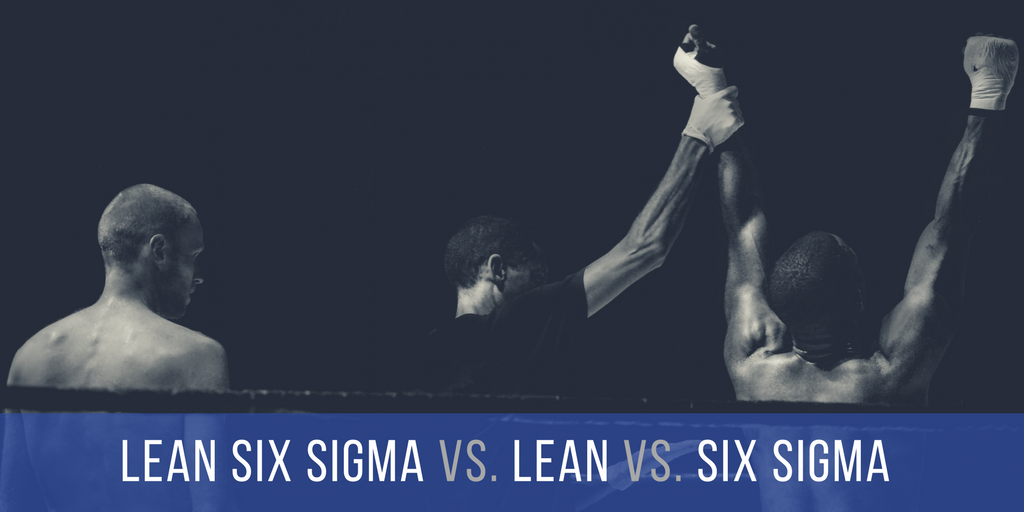
09 Mar Lean Six Sigma vs. Lean vs. Six Sigma
There are many organizations that have chosen a lean six sigma approach to continuous improvement, while a significant percentage of the others have chosen just lean or just six sigma. Any of these approaches can successfully drive continuous improvement and there are countless examples of organizations that have done so. However, embracing an approach that focuses solely on lean or solely on six sigma will not yield the same benefits as lean six sigma.
Six sigma focuses on getting processes “on target, with minimum variation.” That is, we want to ensure that our processes, and thus the product or service we produce, hits the customers target each and every time. A simple example is delivery time. If the target is noon, the closer we are to the target, the more satisfied the customer will be. If we can hit the target every time, we will maximize customer satisfaction. We also eliminate the need to inspect for errors or defects and remediate them, which enhances profitability.
Lean focuses on reducing waste and maximizing flow. We seek to reduce, to the greatest degree possible, those activities (and the time associated with them) that are non-value-added. I like to use the word “downtime” as a mnemonic device to remember the eight types of waste: defects, over-production, waiting, non-utilized resources, transportation, inventory, motion and excess processing. Lean practitioners focus on reducing the non-value-added time and activity in a process, which greatly enhances productivity and efficiency and thus profitability.
However, taking an “either or” approach is fraught with peril, which I can illustrate with a short story. I had the privilege a few years ago to launch a lean six sigma initiative for a large, global company. The president of the firm kicked off the initial training session with a discussion of why the lean six sigma initiative was so important. His talk can be summarized as follows. “Ten years ago, we implemented a lean initiative and we have been extremely successful. We have stripped a tremendous amount of waste out of our processes and in doing so we have dramatically improved our performance. We have the highest margins in the business and our share price has risen dramatically. However, there is a problem. I have spent the past 3 months speaking with our customers and have been given the same message by every one of them. If they had any alternative but our company, they would take it in a heartbeat. The problem is that while we have eliminated a lot of the non-value-added activities, we have ignored getting the value-added steps on target with minimum variation. The result is that we have a lot of variation in our products. So much so that customers have very low levels of satisfaction and are actively seeking alternate suppliers. That is why we are migrating from lean to lean six sigma. We need to fix the value-added steps in our processes or we will not have a viable business in ten years.” This was a very insightful perspective and he was completely right.
If one embraces only lean and ignores getting the value-added steps in a process “on target, with minimum variation”, then the above problem results; you will have low levels of customer satisfaction and in the long-term, the business cannot survive. The converse is also true. If one embraces only the variation reduction philosophy of six sigma and does not focus on minimizing waste, then the organization ends up trying to get its waste “on target, with minimum variation. Getting non-value-added activities finely tuned is not a strategic approach that any organization should follow.
The bottom line is that both waste reduction and variation reduction philosophies need to be embraced, which is what lean six sigma does. In lean six sigma, we eliminate as much waste from a process as possible and then get the value-added activities “on target, with minimum variation.” In this way, we maximize productivity, quality and customer satisfaction, which drives profitability and competitive advantage. This is the quickest and most comprehensive approach to driving improved business results.



